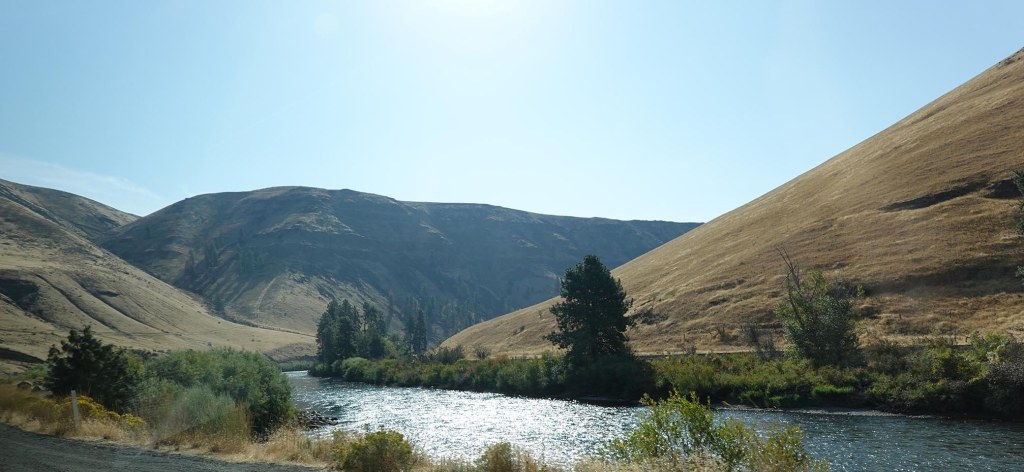Since we have made a number of trips to Boise, we decided that for this one we would go from Walla Walla, WA, up and over the Blue Mountains of NW Oregon to La Grande before rejoining I-84 there.

Route 204 from Weston wound up the NW side of the mountains to a viewpoint from which we could see over the continuous evergreen forest towards the dryer rolling hills in the (forest fire smoke hazy) distance.

A bit further on a less hazy view gave a better sense of the idyllic landscape. The area near the top of the mountains has only a scattering of residences, but we stopped at the Woodward Campground on Langdon Lake to see what that was like.

A number of cabins could be seen on the far side of the lake; but this public campground has decided to provide only limited access to the water and keep most of the landscape undisturbed. This means that many of the campsites have views over wetlands through the trees to the water.

The areas of the campground away from the lake get to enjoy the pines.

By necessity, an access road serves the various campsites and provides the occasional view corridor through the trees, perfect for scouting out any birds.

From here it was steadily down hill to Elgin where we emerged into the Grande Ronde valley and a spectacular view of Mt Harris, which at nearly 5400 feet, emerges dramatically from the surrounding farmland.

We followed route 82 to La Grande where we got back on I-84, continued southeast through Baker City until taking a break at Farewell Bend State Recreation Center along the Snake River south of Huntington.


There’s a definite story behind the name “Farewell Bend”. It has to do with the fact that a few miles north of this bend in the river the Snake enters Hell’s Canyon, a sheer, impassible, rocky slice through the mountains that is as inaccessible today as it was then. At this point in their journey, Oregon Trail settlers had to leave the river valley and make their way over the Blue Mountains between La Grande and Pendleton, a tough challenge, but possible. It must have been hard to leave this beautiful part of the Snake River behind.

The park itself had modest but nice facilities for our lunch break.

Since we’ve been this way before, I’ll leave you with this photo of the river from a previous trip. It’s a view looking north towards the bend at about the same time of year.

Next Stop – Boise

















